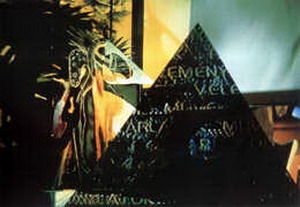Content:
Fishing, an age-old activity, has been captivating anglers for centuries. Among the various techniques, fishing with a floating head is a popular method that allows anglers to target specific depths in the water. This article will provide you with an in-depth guide on how to master the art of floating head fishing, complete with step-by-step illustrations to help you visualize the process.
Understanding Floating Head Fishing
Floating head fishing, also known as "popper" fishing, is a technique used to imitate surface insects or baitfish. By using a floating lure, you can trigger strikes from fish that are feeding near the surface. This method is particularly effective in clear water conditions and is widely used for catching species like bass, trout, and panfish.
Choosing the Right Equipment
To begin, you'll need the following equipment:
- Floating rod: A rod with a fast action is ideal for this technique, as it allows you to make quick and precise casts.
- Floating line: Use a line that is specifically designed for floating head fishing, as it will help your lure stay on the surface.
- Floating head lure: Select a lure with a realistic appearance, such as a popper or a surface skimmer.
- Weight: Attach a small weight to the line, just above the lure, to ensure it stays on the surface.
- Hook: Choose a lightweight, sharp hook that matches the size of your lure.
Setting Up the Rig
Now that you have all the necessary equipment, it's time to set up your rig:

- Attach the weight to the line, about 12-18 inches above the lure.
- Thread the lure onto the hook, making sure it is properly secured.
- If desired, add a split shot or a small swivel to prevent tangles.
Casting Techniques
Once your rig is ready, it's time to learn the casting techniques:
- Hold the rod with a firm grip and position the lure slightly above the water.
- Take a backcast, allowing the line to unwind smoothly.
- As the line reaches the maximum length, give it a strong forward cast, flicking the rod with your wrist.
- The key is to make a short, powerful cast that keeps the lure on the surface.
Presenting the Lure
After casting, it's crucial to present the lure in an enticing manner:
- Allow the lure to float on the surface for a few moments, then twitch it gently with your rod tip.
- Vary the speed and intensity of your twitches to mimic the natural movement of insects or baitfish.
- Experiment with different retrieves, such as a slow roll, a darting motion, or a stop-and-go pattern.
Reading the Bites
When using a floating head lure, it's important to be able to recognize the subtle signs of a bite:
- Pay attention to the rod's movement, as a sudden twitch or a sharp pull can indicate a strike.
- If you feel a tap or a light tug, set the hook immediately.
- In some cases, you may not feel a bite at all. Instead, watch the lure's movement and react when it stops or changes direction.
Safety Tips
When fishing with a floating head lure, always prioritize safety:
- Wear sunglasses to protect your eyes from glare and to see the fish more clearly.
- Use a fishing vest or a life jacket, especially if you're fishing from a boat.
- Be aware of your surroundings and avoid casting towards other anglers or obstacles.
In conclusion, mastering the art of floating head fishing requires practice and patience. By following this comprehensive guide and utilizing the provided illustrations, you'll be well on your way to becoming a proficient angler. Happy fishing!












